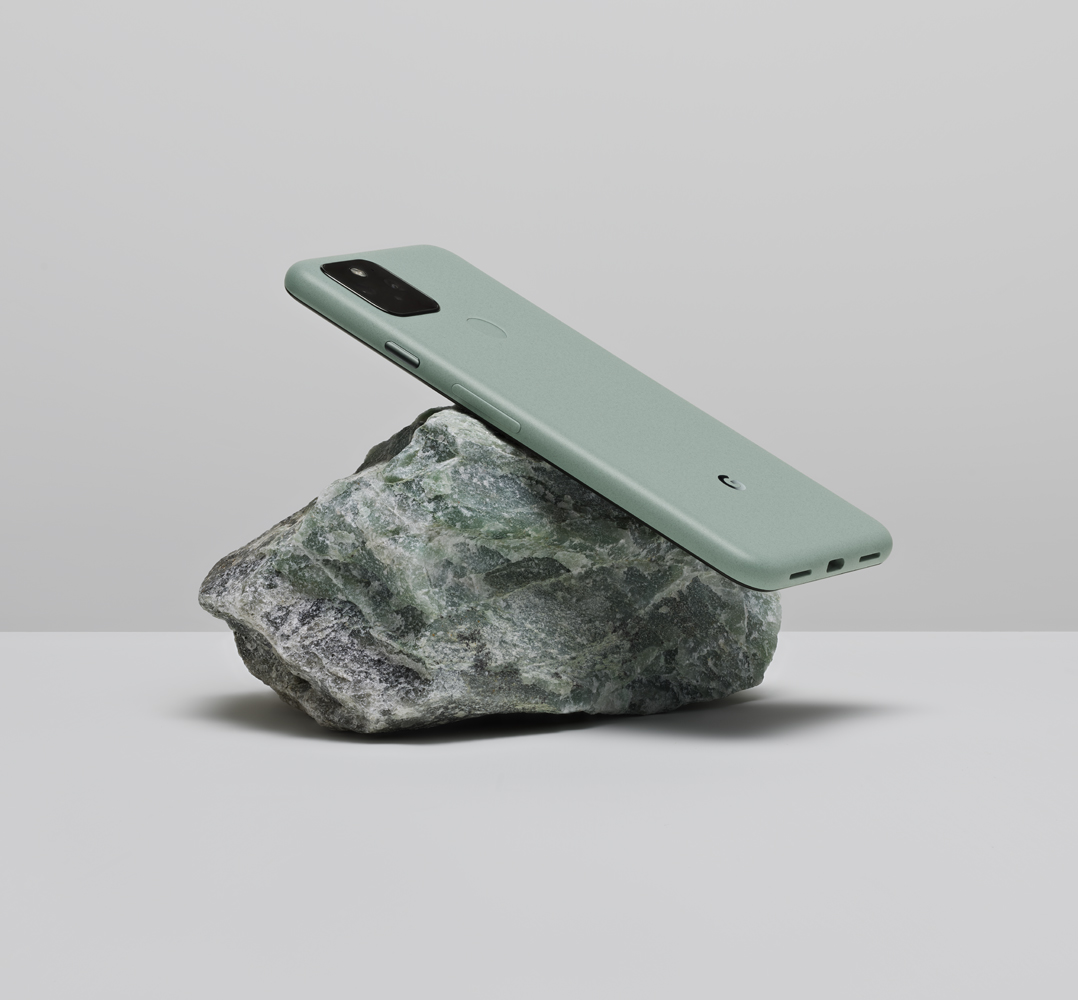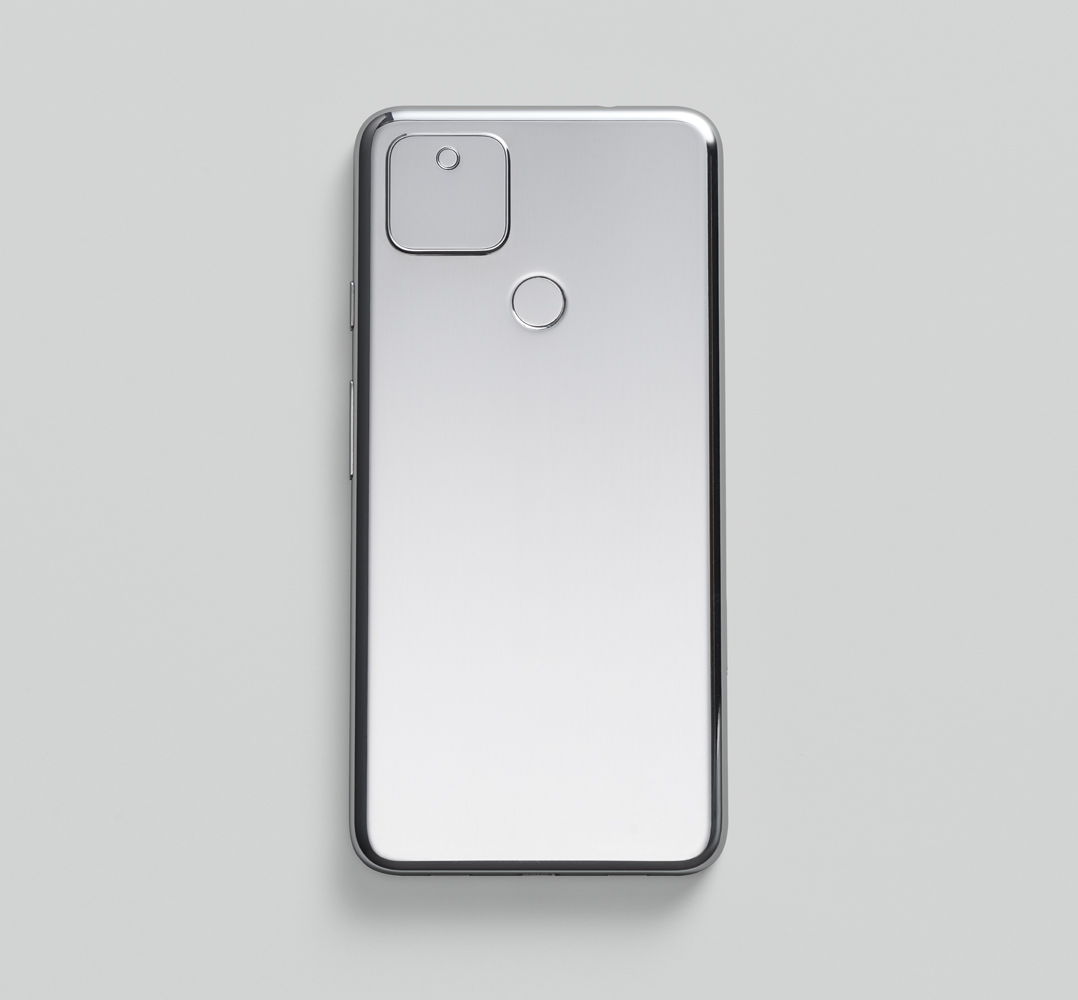The alchemy of aluminum: Pioneering a new recycled alloy for our products
Featured technology
100% recycled aluminum specifications
Who we’re helping
Consumers
Our supply chain
Our role
Developed new recycled metals for the Pixel 5 and other projects, and supply chain practices, to help accelerate the transition to a circular economy

Examine the enclosure of a Google Pixel 5 phone and you’ll find exactly what you’d expect. The body is sleek and sturdy. The phone is every bit as reliable as other Google Pixels, and it expertly captures a 5G signal. In short, it looks, feels, and functions just like a Google phone should.
Yet the Google Pixel 5 has one crucial difference: The aluminum inside the back housing is made with 100% recycled content. This allows us not only to eliminate primary aluminum in the enclosure and reduce waste, but also to lower the carbon footprint of manufacturing the enclosure by 35% compared with primary aluminum.
The fact that the phone’s performance doesn’t miss a beat is a testament to the team of Google design engineers, environmental engineers, and business strategists who led the transition to the new material.
In the process, they created new recycled metals and supply chain practices at Google without compromising on performance. And they helped us take a big step forward in our commitment to using recycled materials in all Made by Google products by 2022.
This commitment is part of how we’re working to accelerate the transition to a circular economy, where businesses can create value through the maximum reuse of finite resources. In addition to creating a positive social and environmental impact, it’s been estimated that transitioning to a circular economy could generate $4.5 trillion in new economic output by 2030.1 We believe that our part starts with building a more circular Google through efforts like our recycled aluminum project.
Reimagining our aluminum supply chain relationships
“In looking for ways to reduce the Pixel 5’s environmental impact, we started with a life cycle assessment of the earlier Pixel 3,” says Julie Rapoport, the environmental footprinting lead for the consumer hardware group at Google. “We found that the biggest contributor to the carbon footprint was the aluminum enclosure. And a lot of that came from the electricity required to make aluminum from mined bauxite.”
By contrast, recycled aluminum requires much less energy to produce. For carbon footprint accounting purposes, the impact of a recycled material doesn’t count toward a product’s footprint until it is sent to a recycler. “It takes a lot of energy to turn rocks into metal,” says Rapoport. “It takes a lot less energy to melt existing metal and turn it into a different shape.”
Once we decided to use recycled aluminum, our next step was finding viable suppliers. That’s not as easy as it sounds. In many electronics supply chains, there’s a gap between material suppliers and product manufacturers.
“For this program, we had to go far upstream in the supply chain to the source that was supplying our aluminum, then negotiate a new type of deal that they’d never done before,” explains David Tognotti, who manages global strategic partnerships and relationships at Google.
We now contract with multiple recycled aluminum suppliers, who together have the capacity to meet our current and future demand.
Creating a new recycled alloy specification
“After we determined we could meet our supply demand, we had to prove recycled aluminum would work—at a material level, a part level, and a system level,” says Rapoport.
Nailing down these details required bringing other Google teams on board.
We asked engineers, product designers, project managers, sustainability leads, and other stakeholders what they needed to feel comfortable using recycled aluminum. We then compiled a list of technical, environmental, operational, and business requirements for the material.
Google metallurgical engineer Jinsoo Kim tackled the chemistry. His team studied the chemical compositions of different recycled aluminum alloys and grades, looking for an optimal combination of alloying elements to meet our performance standards without degrading during the manufacturing process.
Kim created new 100% recycled aluminum specifications for the Pixel 5 and other projects. The specifications detail the different alloying elements and quantities that must be present in the recycled aluminum we use, along with the technical performance it needs to deliver. The specification used for the Pixel 5 is one of six new 100% recycled alloy specifications in the Google portfolio.
Then, we extensively tested and validated the recycled material to ensure that it is functionally indistinguishable from primary aluminum.
Starting in 2021, our material suppliers are obligated to make our recycled aluminum available to the consumer electronics industry as a whole so that they can also start using 100% recycled aluminum in their products, if they choose. “It’s a core Google principle to try to lift all boats,” says Jon Godston, an engineering manager working to build out a portfolio of Google products using recycled content.
Finally, we needed proof.
“When things are out of your sight in factories, you don’t always know what’s going on,” Tognotti says. “We had to be certain we were getting what we were promised.”
We partnered with third-party certifier UL Environment to validate the aluminum recycling process and create a chain of custody throughout the supply chain. “It’s critical that the process be watertight,” says Godston. “We audited the entire chain of custody—from the aluminum supplier to the component manufacturer to the final product.”
The aluminum supplier puts a physical stamp on every recycled aluminum ingot, or bar, to confirm its legitimacy.
We’ve since worked out terms with our component manufacturers to purchase these new alloys for our products. “It’s a more involved process for us now,” says Godston. “Both our material suppliers and our component manufacturers are now contractually obligated to follow our material specs and everything else in our component drawings. We have a bigger influence over those relationships.”
What’s next?
While the Pixel 5 is our highest-profile product to use 100% recycled aluminum, more will follow. “Wherever we’re using an aluminum grade in a product, we’re working to replace it with a 100% recycled version moving forward,” Godston says. “It’s currently in the works across several product categories.”
The new recycled specs are vital to that process. “We want to enable Google product designers to choose materials that have a lower carbon footprint and are better environmentally,” Rapoport says. “So we’re giving them the tools to consider a recycled aluminum component that has the same strength, machinability, reliability, and aesthetic performance.”
For the team, the results are gratifying. And the process itself has also been rewarding, showing us what’s possible when we push the envelope—and each other.
“This was the first time all of us worked together,” Tognotti says. “We assembled a great team, and we expect to do more projects like this in the future.”
1 Peter Lacy and Jakob Rutqvist, Waste to Wealth: The Circular Economy Advantage, 2015.

